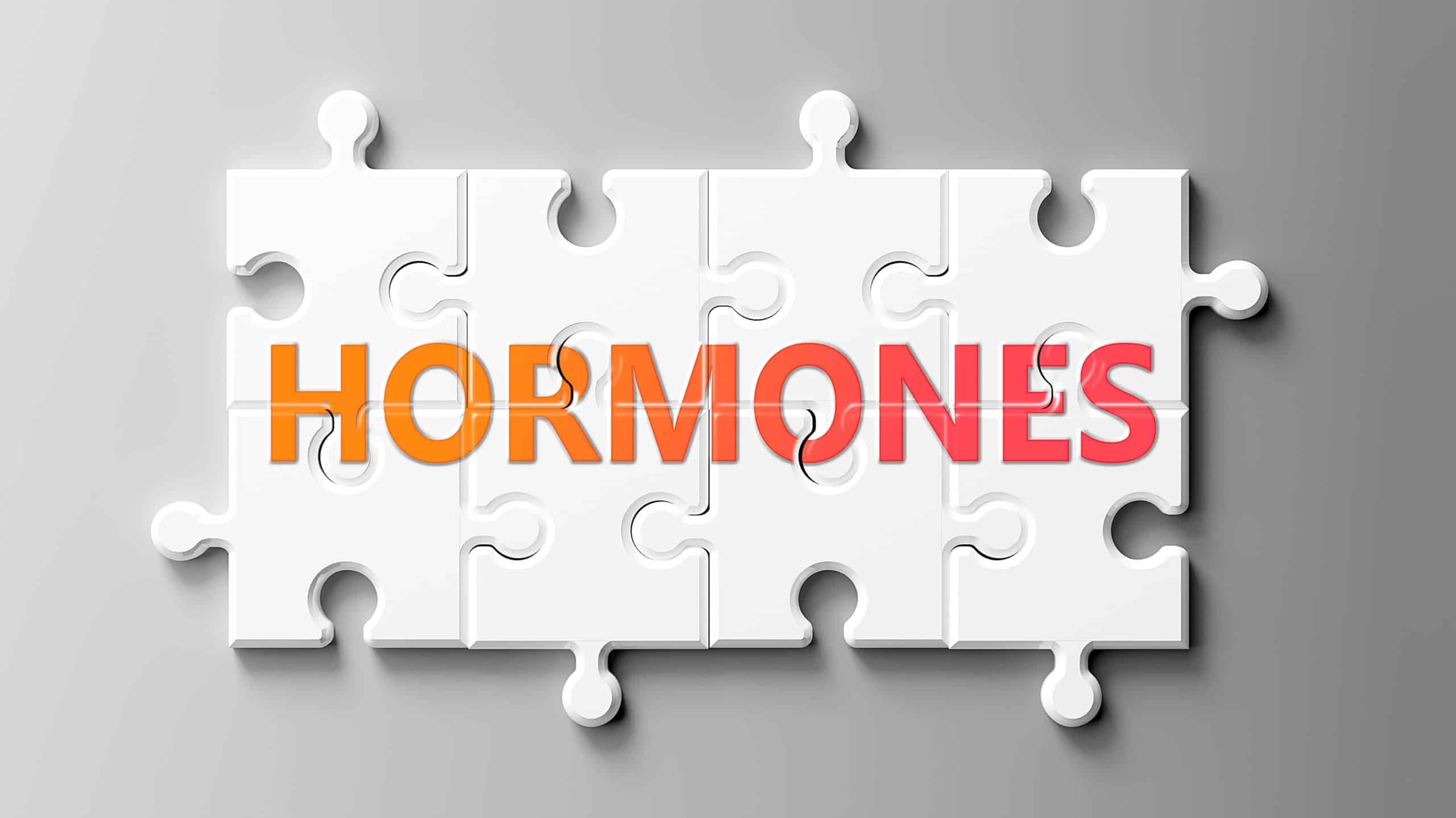What are high estrogen levels?
The reference range for estradiol is 10-45 pg/mL or 36-165 pmol/L in most labs. Estradiol levels at 30-35 pg/ml (= 110-128 pmol/L) or more start to be excessive and can increase the size of the prostate and degenerate its tissue (metaplasia of prostatic epithelial cells). For estrone, which is 3 to 10 times less potent than estradiol, the reference range is 20-60 pg/mL (= 74-222 pmol/L). Regarding estrone levels, it is less clear from what level the risk of pathology may increase, possibly from 45-50 pg/mL (= 167-185 pmol/l) on.
Obese men have higher estradiol levels
Higher levels of estradiol are almost systematically associated with higher fat mass and obesity. The reason for this is the richness in the enzyme aromatase of the fat tissue. Aromatase converts the male hormone testosterone to the female estradiol, and the male hormone androstenedione to the female estrone. The higher the fat mass, the more aromatase there is to convert androgens to estrogens.
The feminizing effects of estrogens
Higher estradiol levels also induce in men excessive milk gland development, which enlarges the breast, a phenomenon called “gynecomastia.” Thus, excessive estradiol levels may feminize a man’s body.
Do excessive estrogen levels weaken the heart and arteries?
High estradiol levels have also been linked to worse lipid parameters, such as higher serum levels of total and “bad” LDL cholesterol and a lower level of “good” HDL cholesterol compared to men with normal estradiol levels. Estradiol levels may also adversely impact a man’s arteries with atheroma plaques and a thicker intima media (interior wall) of the carotid arteries, for example. What about the heart? Five studies have shown that men with high estradiol levels have a significantly higher risk of coronary heart disease. In men with myocardial infarction, levels of both estradiol and estrone are a significant 20-40% higher. The more severe the myocardial infarction, the higher both estrogen levels are.
High estradiol levels cause premature ejaculation and erectile dysfunction, enlarge the prostate, and are suspected of promoting prostate cancer
In a study, the serum estradiol level was 24% higher in men with erectile dysfunction than in men without erectile dysfunction. It is likely that excessive estradiol blocks testosterone receptors and, thus, testosterone action. Similar results of high estradiol levels were found in men with premature ejaculation. At least 10 studies indicated that high estradiol levels were found in men with benign prostate hypertrophy. Estradiol stimulates proliferation of fibrous tissue in the prostate, the basic mechanism for benign prostate (stromal) hyperplasia. Prostate cancer has been reported to be associated with high estrogens, particularly high estrone, in men, whereas anti-estrogen treatment given to male mice with prostate cancer inhibited progression of prostate cancer.
Do high estrogen levels influence a man’s life expectancy?
The mortality curve is U-shaped in older men referred for coronary angiography, meaning that insufficient and excessive levels of estradiol increase the risk of dying. The optimal level in these men is around 24 or 25 pg/mL (= 88 or 92 pmol/L). Higher and lower estradiol levels may increase the risk of premature death.
How to lower estrogen levels
Based on the above mentioned information, it becomes evident that high estrogen levels, especially of estradiol, should be lowered to 24-25 pg/mL (= 88-92 pmol/L) in men. One of the most efficient but often overlooked ways is simple: Stop drinking caffeinated and alcoholic beverages. Two cups of coffee or more a day may increase estradiol levels by 60%. Drinking one glass of alcohol a day also increases the estradiol level in men by approximately 60%, according to a Greek study. So, stop drinking alcohol, and if you do drink, do not have more than one or two glasses once or twice a week. Losing fat mass when you’re overweight also substantially decreases your estradiol level up to 50%! This reduces the levels of aromatase enzyme in the fat tissue, thereby decreasing the likelihood of testosterone converting to estradiol. Also, wearing tight underwear and tight trousers may cause blood stagnation in the testicles because of the compression of the testicles against the body. This results in the testicles making more estradiol than testosterone. For this reason, men should always wear loose underwear and trousers. Last but not least, progesterone may also decrease the level of estradiol by accelerating the conversion of estradiol to estrone, which is a much less potent estrogen. A dose of 100 mg per day, taken orally, may, in my experience, decrease the estradiol level by approximately 30%. Finally, an aromatase blocker can be given with greater efficacy, such as anastrozole (Arimidex®) at doses between 3 x 0.25 mg/week and 0.5 mg/day.




